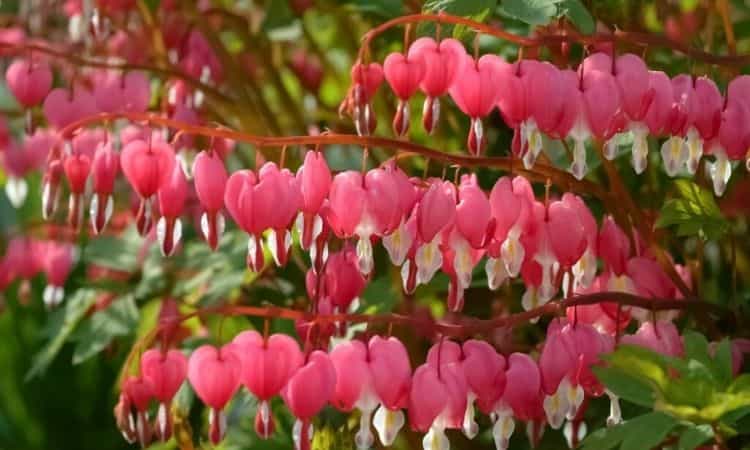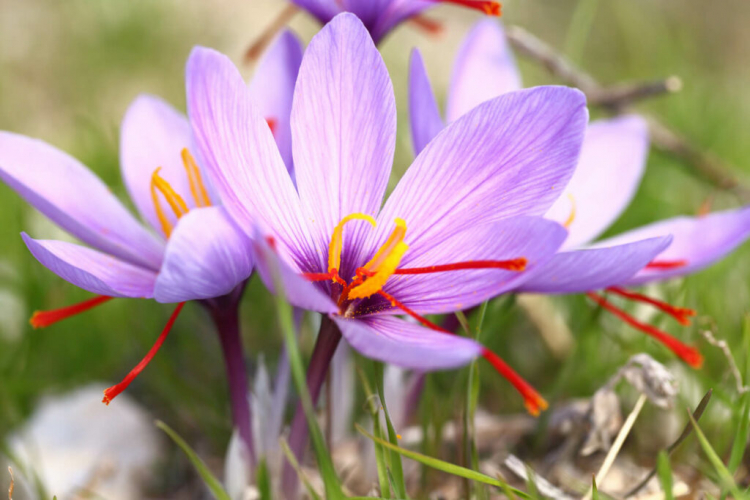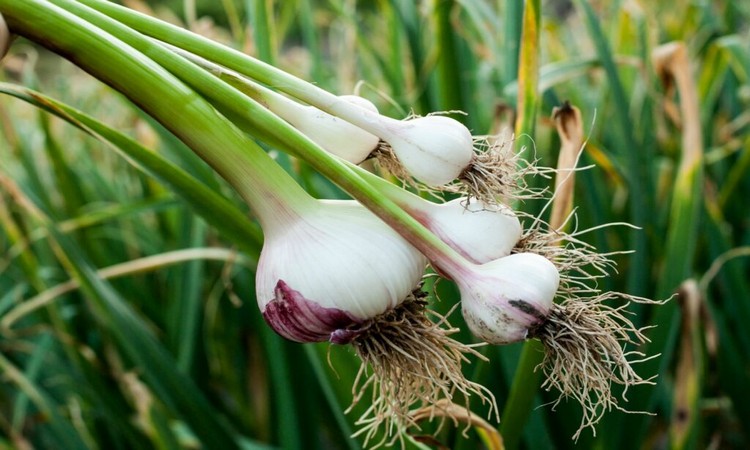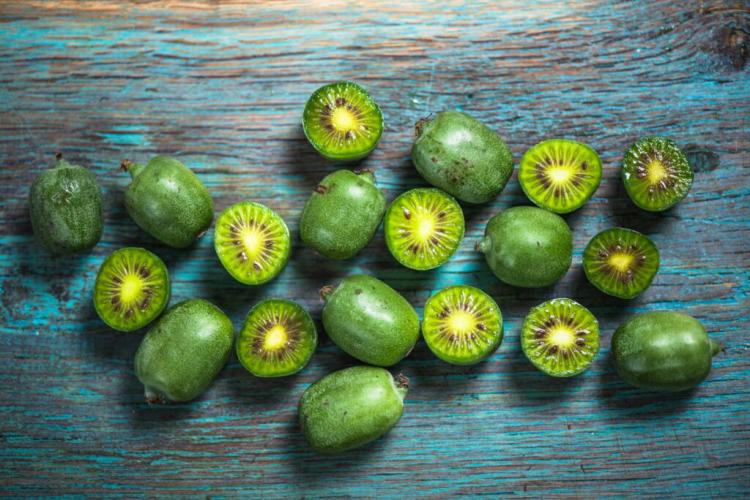Asian Bleeding-Heart: Tips For Planting And Caring For Lamprocapnos Spectabilis
As sad as its name sounds, the flower Asian Bleeding-Heart gives every garden that certain something with its unusual blossoms. We present the most beautiful varieties, show how to plant and care for the Asian Bleeding-Heart properly, and reveal whether the plant is poisonous.
The Asian Bleeding-Heart (Lamprocapnos spectabilis) is a classic not only in farm gardens. As a perennial spring plant, it captivates above all with its spectacular and filigree flowers.
Asian Bleeding-Heart: Flowering Time, Characteristics And Origin
Table of Contents
The Asian Bleeding-Heart belongs to the poppy family and the subfamily of the fumarole plants (Fumariaceae) and is often sold in the plant trade under the old name Dicentra spectabilis. The plant originates from China and Korea, where it can be found in light, moist deciduous forests. It was only less than 200 years ago that this graceful perennial arrived in Northern Europe. It has always fascinated gardens and parks with its special flower shape, which is the reason for its dramatic name.
The perennial, bushy perennial reaches a height of up to 80 cm and develops arching, hanging shoots. During the bleeding heart bloom time from April to June, these bear eight to twelve heart-shaped individual flowers each with a drop-shaped extension that looks like a tear flowing down. In the natural variety, the flowers are pink-white in color. The delicate leaves of the Asian Bleeding-Heart are highly pinnate, lobed, and appear in a fresh green. The foliage dies after flowering and the nutrients and reserves are absorbed into the root ball.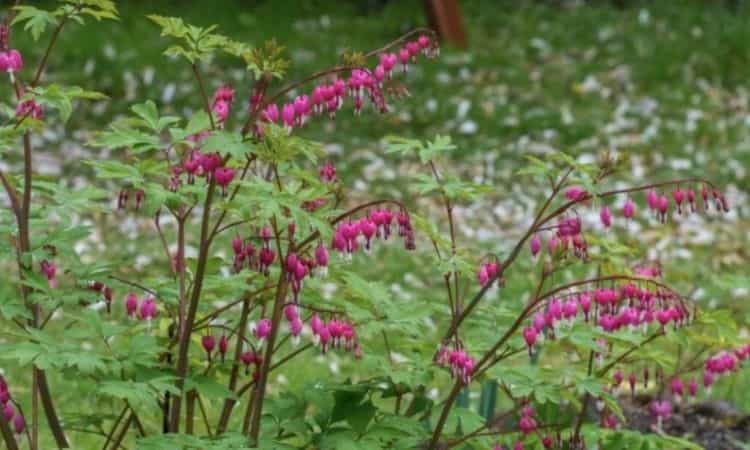
The characteristic flower shape is also the subject of a Japanese legend: A young man tried to win the heart of a girl by giving her two rabbits, a pair of shoes, and earrings. But when she refused his gifts and thus his love, he stabbed himself in the heart with a dagger, so that in his grief it became an Asian Bleeding-Heart.
Is the Lamprocapnos spectabilis bee-friendly? The perennial plant attracts various insects, but the elongated shape of the flower allows long-nosed insects to reach the bottom of the narrow flower. Bumblebees make use of their mouth and bite a hole in the flower to get to the nectar. The resulting entrances are then also used by bees and other insects.
The Most Beautiful Varieties Of The Flower Asian Bleeding-Heart
There are many different varieties of Lamprocapnos spectabilis or Dicentra spectabilis, which differ mainly in the color of their flowers. Besides the classic variety with the pink-white flower, there are also white-flowering, red-flowering, and yellow-flowering varieties. Also, the varieties differ to some extent in their growth height and leaf color. For example, the foliage of the variety ′Goldheart′ glows green-yellow and the foliage of the variety ′Stuart Boothman′ shows a bluish shimmer.
White varieties
- Alba: Pure white flowers; foliage appears in fresh green; with a growth height of 50 – 70 cm somewhat smaller than the original species; bloom time: May to June.
- White Gold: White flowers; green-yellowish foliage; growth height: 60 – 90 cm; due to the white flowers and the light-colored foliage it stands out especially in dark areas of the garden.
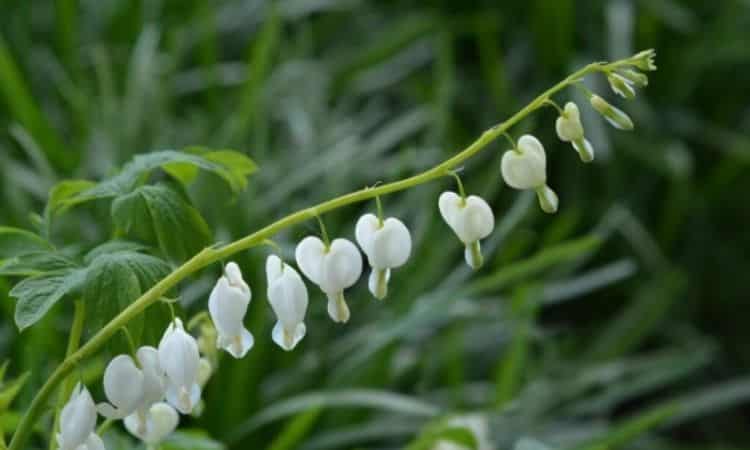
Red varieties
- Valentine: Cherry red and white flowers; dark green, reddish shimmering leaves; growth height: 70 – 80 cm; flowering time: May to June.
Other Dicentra species resemble the Asian Bleeding-Heart in their flower shape and extend the color spectrum of heart flowers: - Dicentra Formosa: Dwarf heart flower; Growth height: 30 cm; Ground cover; flowers appear in dark pink; Flowering time: June to July.
Dicentra Formosa ′Burning Hearts′: Dwarf heart flower; growth height: 30 cm; ground cover; dark red flowers with white edges; very long flowering time from June to August.

Black And Blue Varieties
Black and blue hearts of tears are offered again and again without any indication of the variety at different internet traders. However, you will not find such plants in professional perennial nurseries. The reason is simply that there is no blue variety of the plant so far because it is not so easy to grow other flower dyes into a plant. The closest to a blue is probably the related species Dicentra Formosa, which bears violet-pink flowers and grows only 20 to 30 cm high.
Yellow Varieties
Another representative of the genus of heart flowers is the species Dicentra scandens. This is a climbing heart flower species with yellow flowers.
Dicentra scandens: Tendril heart flower; Growth height: approx. 200 cm; Blossoms appear in bright yellow, flower tips turn slightly reddish; Flowering time: June to August. The tendril heart flower is not hardy and is annual in our region.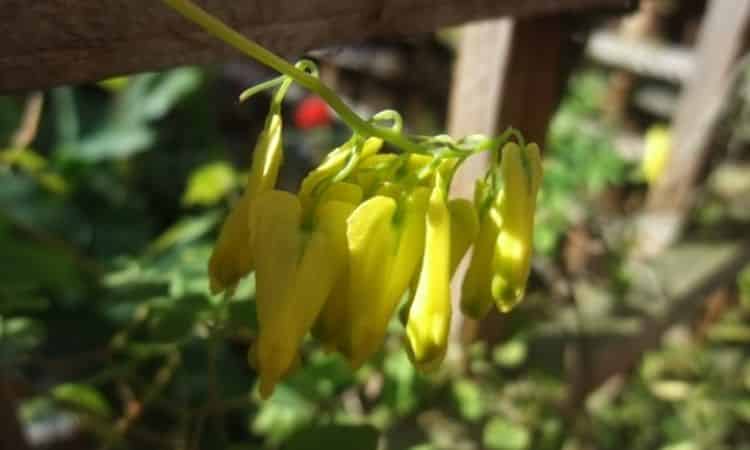
Is the Asian Bleeding-Heart hardy?
The perennial heart flower species mentioned above are hardy in our latitudes. The plants tolerate temperatures in the double-digit minus range. To be on the safe side, you can cover bedding plants with a protective layer of leaves in autumn.
Plants kept in a pot should be wintered in a frost-free place, because on very cold winter days there is a risk that the entire pot and thus also the roots will freeze through.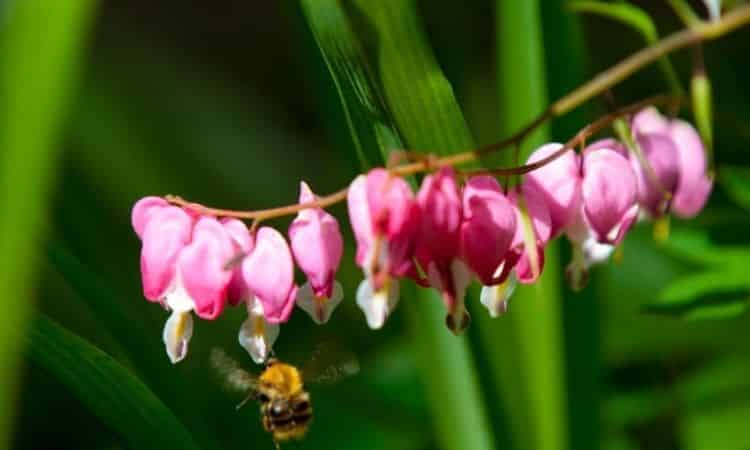
Planting an Asian Bleeding-Heart
As soon as there is no more ground frost in spring, the right time for new planting has come. Although hearts of tears are hardy, the large, heavily fertilized plants from many garden centers cannot tolerate frost. The situation is different with the resistant specimens from professional perennial nurseries. You are on the safe side if the plants are not planted until mid-May. For earlier plantings, hearts of tears should be protected with fleece or upside-down clay pots. Early planting gives the plant enough time until the first winter to develop its roots and establish itself in its location.
As an alternative to planting, the Lamprocapnos spectabilis can also be sown. The seeds of another plant can be harvested directly once they are fully developed. Without storage, the seeds are simply scattered in the bed and the location is marked. New young plants will develop from the seeds in the current or next year.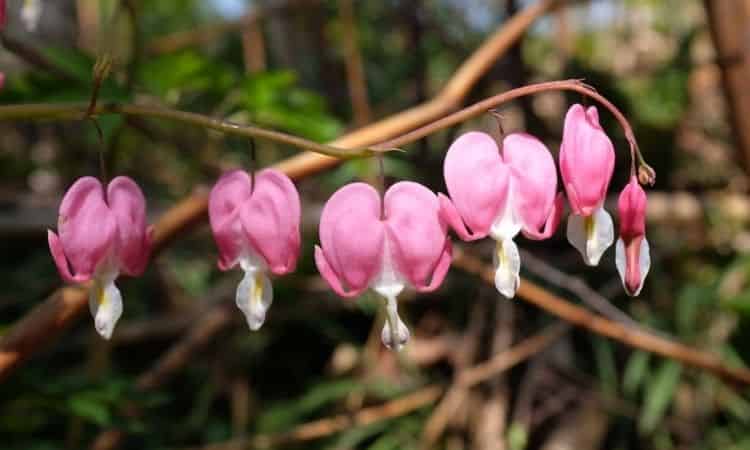
The perfect location
Due to its original origin, the Asian Bleeding-Heart prefers the edge of the woods or beds in light semi-shade. Nutrient-rich, humusy, moist, and not too heavy soils are optimal. A place in a perennial bed partially shaded by trees or bushes and well-rooted is therefore ideal. The substrate should be slightly acidic to slightly alkaline.
How to plant?
Dicentra spectabilis works best in the flower bed as a single standing guide shrub. Other related species can be planted in small groups. With a planting distance of 60 to 80 cm, one to three plants per square meter can be planted.
First, dig a hole twice the size of the root ball. Then return enough of the excavated and loosened soil so that the upper edge of the root ball is level with the surface of the soil when you place it inside. Then pour the rest of the soil around the root ball.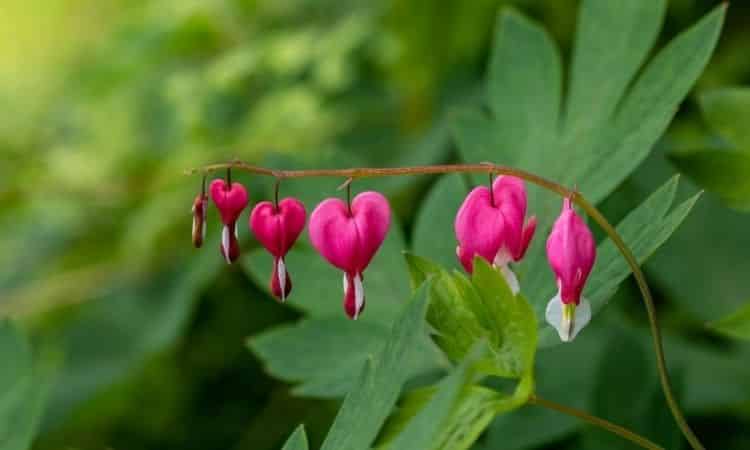
Lamprocapnos spectabilis can also be cultivated in a pot on the patio or balcony, provided that there is a place in partial shade and a sufficiently large planter available. When choosing a planter, it is best to opt for a plastic pot or a glazed clay pot. An open-pored clay pot dries out too quickly, which is not good for the plant.
Asian Bleeding-Heart: Everything For Watering, Fertilizing, And Cutting
Especially at the beginning of the development, the perennial plant must not be left out in the dry. The soil around the plant should therefore always be kept moist. Do not water the Asian Bleeding-Heart too much, however, as this can cause waterlogging, which promotes root rot. Therefore, when choosing a planter, make sure that, in addition to the size, a drainage hole is also available. For optimum water drainage, you can also place broken clay fragments from broken clay pots or expanded clay on the bottom of the pot.
Read More
